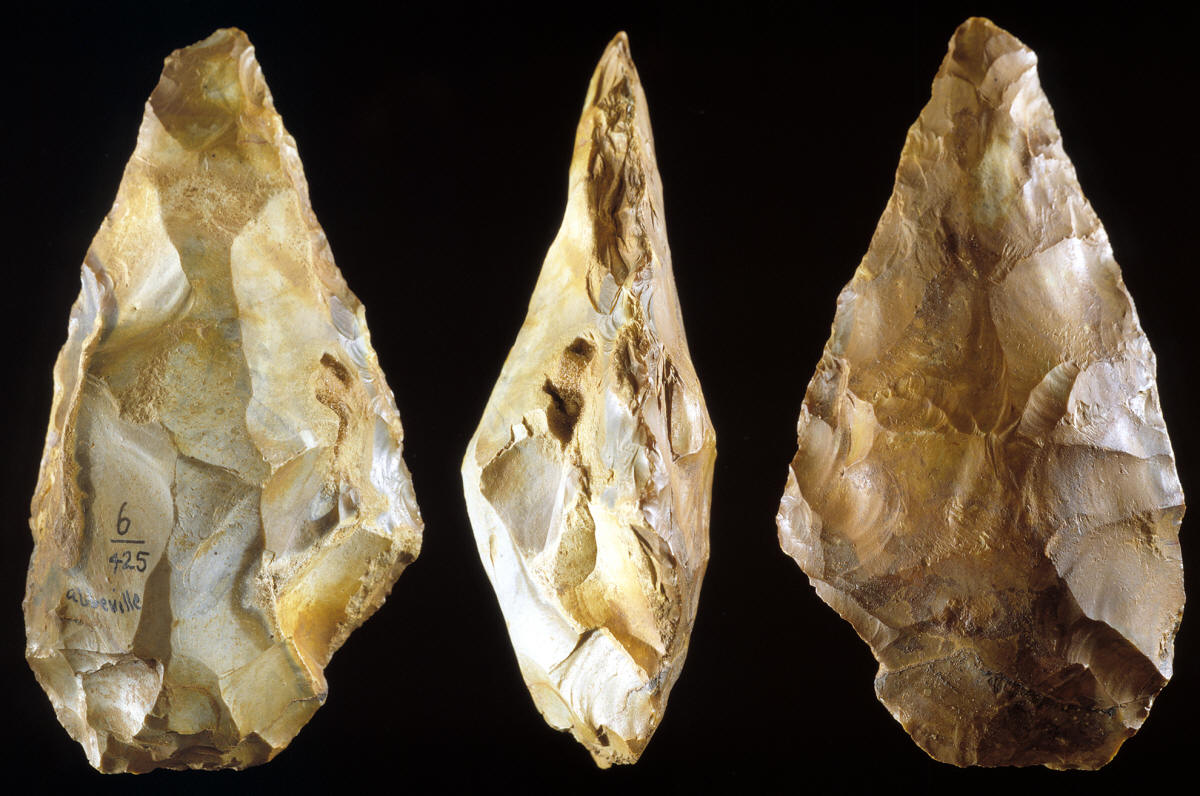|
HANDAXE
ACHEULEAN
ABBEVILLE, FRANCE
EST. 600,000 to 500,000 YEARS AGO
AMERICAN MUSEUM OF NATURAL
HISTORY COLLECTION
RETURN TO PAGE 1
COPYRIGHT MAY 31, 2008 PETER A. BOSTROM
This handaxe was found at Abbeville in northwestern France near the
Somme River. It represents a very early stage of biface technology.
It was made with the use of a hard-hammer using a stone as a hammer.
Later handaxes began to be made with softer hammers made of
either antler, bone, ivory or wood
Jim G. Shaffer, PhD. describes this handaxe as: "An example of an "Almon"
shaped biface. Presence of small cortex areas (the pitted areas on
the thick side of the artifact), large flake removal scars, and
thick cross-section indicate it was manufactured with a hard
hammerstone representing an early stage in biface technology. The
continuous and sinuous cutting edge around the periphery of the
artifact is characterized, especially along one side and the base,
by numerous small and deep flake removal scars suggesting relatively
heavy utilization and/or attempts to thin the artifact."
This handaxe is made of light brown flint and it measures 5 3/16
inches (13.1 cm) long, 2 5/8 inches (6.7 cm) wide and 1 3/4 inches
(4.4 cm) thick.

|
